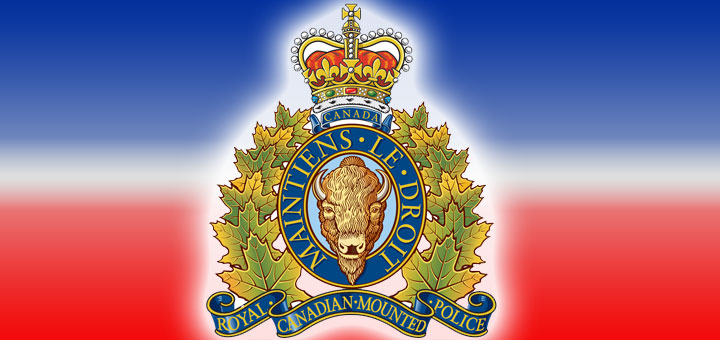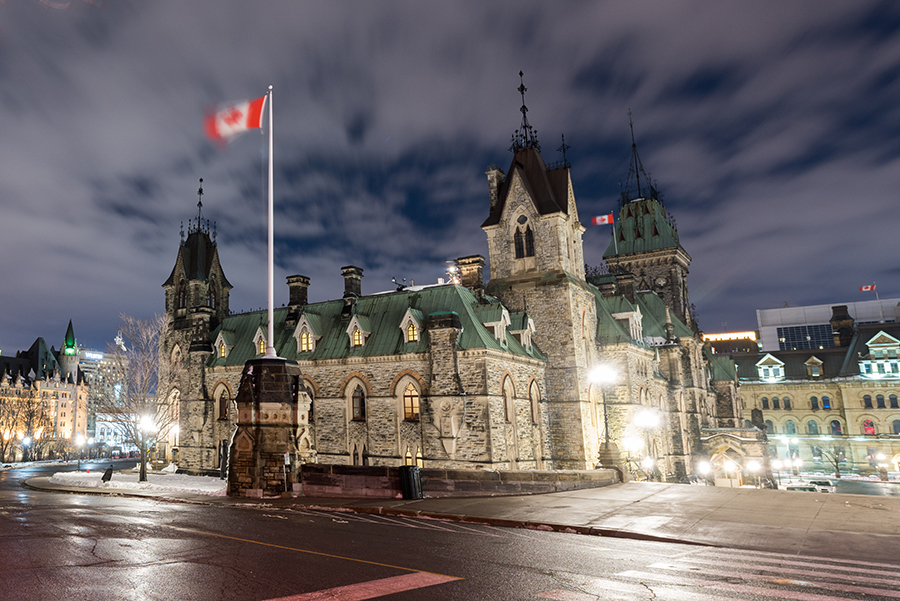Feds announce billions in military spending
Michelle Dorey Forestell,
Local Journalism Initiative Reporter
Billions in new military spending announced April 8 is intended to protect Canada’s Arctic sovereignty and better the lives of Canadian Armed Forces members.
Prime Minister Justin Trudeau, Deputy Prime Minister Chrystia Freeland and Defence Minister Bill Blair announced that Canada will invest $8.1 billion over the next five years and $73 billion over the next 20 years as part of a new defence policy update titled “Our North, Strong and Free: A Renewed Vision for Canada’s Defence.
The announcement occurred at 8 Wing, Canadian Force’s Base (CFB) Trenton, the hub of Royal Canadian Air Force air mobility operations in Canada.
The prime minister began by thanking General Wayne Eyre and the members of the CAF in attendance. As he did so, Trudeau harkened back to the military men and women who had fought in all the various wars.
“Service to Country. Canadian values that define who we are. We’ve always known we are the best country in the world. So we understand our obligation to do our part…Canadians are connected to the world. We always punch above our weight. Today, we live in an increasingly complex and challenging times. So now more than ever the world needs more Canada, the world needs more Canadians.”
According to the prime minister, Our North, Strong and Free, the new defence policy update, responds to the significant global shifts we have witnessed since Canada’s comprehensive defence policy, Strong, Secure, Engaged, was announced in 2017.
“Whereas in the entirety of the 20th century, we sent our people out to the front lines across the world,” the prime minister continued, “we are now on the front lines of new evolving threats; technological advances, cyber-attacks… There are myriad of ways to engage beyond traditional borders.
“With rising and destructive powers like China and Russia,” he acknowledged the most urgent and vital task we face is asserting Canada’s sovereignty in the Arctic and northern regions, where the changing physical and geopolitical landscapes have created new threats and vulnerabilities to Canada and Canadians. This includes upgrading our continental defences to threats or defeating them when necessary.
“NATO’s northern and westward flank is the Canadian Arctic, and climate change is rapidly making the North more accessible… the Northwest Passage could become the most efficient shipping route between Europe and Asia by 2050—just 26 years away.”
Accordingly, the new defence policy update addresses two core objectives: strengthening the CAF’s foundations and acquiring new capabilities to deal with new threats.
According to a release by The Department of National Defence, “to deliver on our renewed vision for defence outlined in the policy, we need to provide the members of the Canadian Armed Forces (CAF) with the tools, equipment, and training they need to keep Canada and Canadians safe in an increasingly unpredictable world and to support them on the home front.
“The new investments in Our North, Strong and Free will ensure Canada can deliver on this vision. Defence investments in Budget 2024 are expected to bring Canada’s defence spending-to-GDP ratio to 1.76 per cent by 2029-30, a significant step forward in our efforts to reach the NATO commitment of 2 per cent, to which we agreed at the Vilnius Summit in 2023. The initiatives under this defence policy also put Canada on track to exceed NATO’s target of 20 per cent for major equipment expenditures as a proportion of defence funding.”
Unfortunately, the additional investments will not meet NATO’s two per cent of gross domestic product spending target for member nations.
Trudeau was asked how the government determined that we could not get 2030.
The Prime Minister pointed out, “We know in the world we are in now, it is important to fuel up the Canadian Forces with the equipment and the resources and support necessary, but we also know there is more to do.”
He said that some investments the government intends to make are not yet quantifiable, giving the example of Arctic submarines.
“Exploring and defining the submarine capabilities, we’re going to need to patrol and protect our Arctic in the coming decades. Those are investments that Canada is going to be making in our Canadian Armed Forces, but we haven’t yet defined exactly what types of submarines and how they’re going to be deployed. So we haven’t put in [this report] the money which Canada will be spending on submarines in the coming years.
“So even as we project getting up to 1.76 per cent of GDP,” Trudeau shared, “in the coming years, we know there is more to come as Canada continues to step up in a more uncertain and, quite frankly, more dangerous way.”
The policy document calls this “A significant increase in defence spending and a major step forward in our effort to reach two percent of GDP, as agreed by NATO members at the Vilnius Summit in 2023.”
The deputy prime minister used her remarks to “remind ourselves why Canada steps up, why we devote time and treasure to foreign policy and defence, why we send Canadian [forces personnel] into dangerous places, even when Canadian soil is not directly at risk.
“Force,” she noted, “Is, of course, always a last resort, but the principled use of force together with our allies and governed by international law is part of our history. And it must be part of our future. To have that capacity requires a substantial investment, which our government is making.”
According to the announcement, Canada will invest $8.1 billion over the next five years and $73 billion over the next 20 years in our national defence over six significant themes to:
- support our people;
- strengthen our foundations;
- build an innovative industrial base;
- defend Canada;
- defend North America; and
- defend Canada’s global interests and values.
“Overseas, Russia is undermining the international rules that have kept us all safe for nearly 80 years through its illegal and unprovoked invasion of Ukraine, and China is challenging these same rules in the Indo-Pacific. At the same time, technology is rapidly changing with new missiles and other threats that are moving faster and are harder to detect. And to meet this moment, we need to step up,” he said, indicating the new investments, which will be in budget 2024.
Michelle Dorey Forestell,
Local Journalism Initiative Reporter
Kingstonist.com






